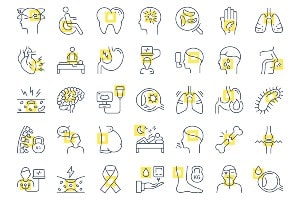About Erythropheresis (Hemapheresis)

Learn about the disease, illness and/or condition Erythropheresis (Hemapheresis) including: symptoms, causes, treatments, contraindications and conditions at ClusterMed.info.
Erythropheresis (Hemapheresis)

| Erythropheresis (Hemapheresis) |
|---|
Erythropheresis (Hemapheresis) InformationHow is apheresis performed?All apheresis procedures involve directing the blood in the patient/donor's veins through tubing to a machine that separates the blood components. The separation is done by either a centrifuge process or a filtration process on the blood in the machine. After the separation, the desired component of the blood is removed, while the remainder of the blood components are reinfused back into the patient. The entire procedure is painless and typically takes about two hours, or only slightly longer than a conventional blood donation. What are contraindications to apheresis?Hemapheresis is generally avoided if a patient has active infection, unstable heart or lung conditions, severely low white blood cell or platelet counts, a bleeding tendency, or a significantly low blood pressure. The overall status of the patient as well as the seriousness and progression of the disease in question are all taken into consideration relative to these contraindications for each individual patient. What are some possible complications of apheresis?Serious complications of donor apheresis are rare. Minor complications of donor apheresis can include bleeding at the donation site and feelings of lightheadedness that usually resolve quickly. More serious complications can occur when apheresis is used to treat serious conditions and include:
What diseases can be treated with apheresis?When used in a therapeutic manner, the apheresis procedure is individualized regarding the frequency of treatments, the volume of blood or components to be removed, and the type of solution used for volume replacement. The following list of conditions for which apheresis may be of benefit is not all-inclusive. Apheresis can be used in the treatment of:
What is apheresis?Apheresis is a medical procedure that involves removing whole blood from a donor or patient and separating the blood into individual components so that one particular component can be removed. The remaining blood components then are re-introduced back into the bloodstream of the patient or donor. Apheresis is used for the collection of donor blood components (such a platelets or plasma) as well as for the treatment for certain medical conditions in which a part of the blood that contains disease-provoking elements is removed. Apheresis is also called pheresis or hemapheresis. The terminology used may also reflect the component of blood that is being removed, such as:
|
More Diseases
A | B | C | D | E | F | G | H | I | J | K | L | M | N | O | P | Q | R | S | T | U | V | W | X | Y | Z
Diseases & Illnesses Definitions Of The Day
- Noncancerous Colloid Thyroid Nodule (Thyroid Nodules) ‐ How are thyroid nodules diagnosed?, Introduction to thyroid nodules …
- Skin, Laser Resurfacing (Laser Resurfacing) ‐ CO2 Laser Resurfacing, Complications of Laser Skin Resurfacing …
- Malignant Fibrous Histiocytoma (Bone Cancer Overview) ‐ Are there any treatments or medications that relieve bone cancer pain? …
- Double Vision ‐ Is it possible to prevent double vision?, What are the symptoms and signs of double vision? …
- Ageusia (Taste Disorders) ‐ Are taste disorders serious?, Can taste disorders be treated? …
- Autism Screening and Diagnosis ‐
- Alpha-fetoprotein Blood Test ‐ In which situations are high blood (serum) levels of AFP used as a tumor marker? …
- Polymyalgia Rheumatica ‐ How do health care professionals make a diagnosis of polymyalgia rheumatica? …
- Stump Appendicitis (Appendicitis) ‐ Appendicitis definition and facts, Are there long-term consequences of appendectomy? …
- Gonorrhea (Gonorrhea In Women) ‐ Gonorrhea facts, How is gonorrhea diagnosed?, What are sexually transmitted diseases (STDs)? …